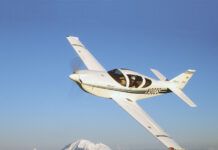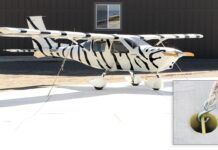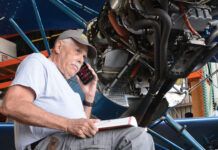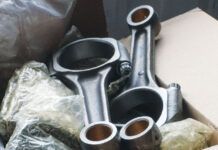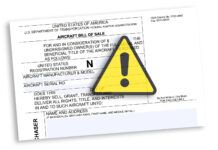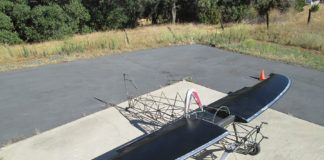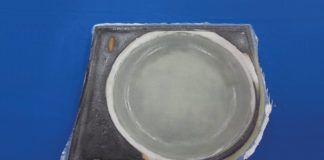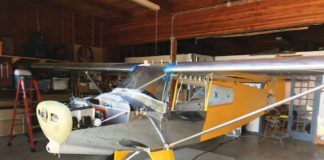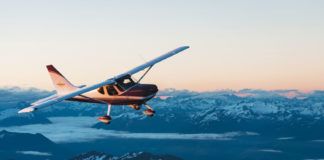This much Ill admit: I do a fair bit of good-natured sniping at our friends with production-line, store-bought aircraft-or buyers of two-part kits, the airplane and the key. And it really is meant with a wink and an elbow levered gently into rib cage, not with anything approaching malice. After all, I was a member of the other team, working in a part of the industry strictly focused on the Average Joe aircraft owner, and I even owned one myself-a Beech Bonanza, of all things. Ive felt Joes pain.
In the course of putting together this magazine each month, I often take potshots at our certified brethren because, well, its a way of reminding you what a good thing we have going here, how fortunate we are to have an industry that supports Experimental/Amateur-Built aircraft and that drives new technology at reasonable cost. I can with some certainty say that the last airplane Ill own will be one created with my own labor.
Now I have to set that rivalry aside and reach for the clammy hands of Bonanza and Mooney owners because were facing the same big problem: fuel. As suggested in our feature on the future of fuel (So Long, Lead, Page 32), one of the possible solutions to the elimination of lead in avgas is to do little more than remove the lead from the avgas. What we get is something everyone is calling 94UL, a 94-octane fuel that will, in essence, work for a large portion of the fleet. But, as we also take up in the article, that numeric majority is actually a minority user of the fuel. The big guys, flying older piston designs on freight, pressurized piston twins for business, and other frequent flyers purchase far more 100LL than the rest of us recreational users. With their volume, they help keep the costs down. Should they leave the scene by, say, moving their equipment to turbine power, we would be in a world of hurt. And if we force them to use 94UL, they will leave.
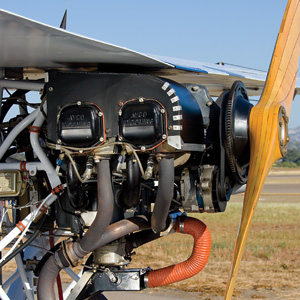
The venerable Lycoming O-320. At 150 or 160 horsepower, itll be happy with a 94-octane unleaded fuel. The question is: Will there be general aviation if thats the only fuel?
Let me say that again: We need all users of piston aircraft on the same page. And on that page should be written just one thing: 100-octane fuel. Period. No equivocation. No, if we can.
Accepting a 94-octane replacement fuel because its easy is, in my view, signing your own death sentence. There is nothing to suggest that this solution, even at todays volume, will be less expensive, and reducing the amount of avgas sold will inevitably increase its retail price. Supply and demand. Works every time.
Im so strident on this point because I have already heard from a few builders who look at their engines and say, Well, its a low-compression O-320 thatll be plenty happy with 94UL. Ill be OK. Rotax owners are looking a tad smug, too, and Im sure theyll be delighted to have the lead out of the fuel. The 912 and 914 were designed for autogas, and run better on it. But you cant always fill up at home, and even with the 912s relatively thrifty nature, topping off with $7 or $10/gallon fuel on a cross-country will only smother activity.
I have also looked at my own engine and wondered what I would have to do to burn 94UL or something akin to mogas. (Although as a resident of California, fuel unsullied by ethanol is not to be had.) I asked Monty Barrett, father of the IO-390, if it would tolerate 94-octane fuel. Careful as always with his answer, in part because he hasnt actually tested the pairing, he relied on his years of experience building engines for racing, where elevated compression ratios are the norm, to hazard a guess. No, I really don’t think itll like [94UL]. For a few days I pondered the possibility of lower-compression pistons and retarded ignition timing, scratched out back-of-the-envelope estimates of performance loss from pulling back to, hopefully, 200 horsepower from 210. Or maybe 190. Its not pretty.
That kind of thinking assumes the battle is lost. I have to believe that it is not. Lycoming has stepped up in a big way, and its new general manager, Mike Kraft, has been more than vocal about the need for a full 100-octane fuel. His viewpoint comes with the benefit of understand his company’s own engines and looking carefully at fleet usage. His viewpoint appears directly opposed to the 94UL route chosen by Teledyne Continental Motors, and I don’t think its because of rivalry.
In the quest for new fuel, we have a few things on our side. One is that were still a viable, if small, market; there is money to be made selling avgas. We have some bright people working on it. SwiftFuel has been flying, as has the GAMI (General Aviation Modifications, Inc.) G100UL. What needs to happen now is for popular opinion to accelerate the momentum (tremulous at this point) that both programs have so far. Pilots and aircraft owners-of Pipers and Pietenpols alike-should make noise in front of the alphabet groups, the FAA and the ASTM in favor of a full 100-octane fuel.
The chant: Get it done. Enough buck passing between the FAA and the ASTM. Stop holding up the STC (supplemental type certificate approval) for using G100UL in turbo Cirruses. No more meetings and summits. Get it done!
In at the Deep End
My old friend Michael Maya Charles has been handed the reins to Flying magazine. An accomplished pilot who once toiled at the pointy end of a FedEx jet, Maya Charles is also a lover of light aviation. His Piper Cub is named Sensei-the respectful Japanese term for teacher. He promises to bring a fresh approach to the magazine, and to better leverage its digital assets, which is publisher-speak for its web site. Michael is facing challenges and opportunities aplenty. I wish him well.
Dave Martin Retires, Sorta
This months Light Stuff column will be former KP editor Dave Martins last for awhile. With his Vans RV-12 flying and having evaluated the vast majority of the SLSA (Special Light Sport, or factory-built) designs now available, he felt that the column had mainly run its course. For the moment, I agree. Until our economy picks up, the SLSA segment will, I believe, continue to stagger along. I don’t doubt there is potential here-though Im still convinced its not nearly as large as the early shills had it pegged-but the time has come for us to let other venues cover the topic. I want to thank Dave for his exemplary work, and for continuing his association with this magazine. The door is wide open for his return to writing, so don’t be surprised to see his articles in issues to come.

![]()
Marc Cook has been in aviation journalism for 22 years and in magazine work for more than 25. He is a 4400-hour instrument-rated, multi-engine pilot with experience in nearly 150 types. Hes completed two kit aircraft, an Aero Designs Pulsar XP and a Glastar Sportsman 2+2.

